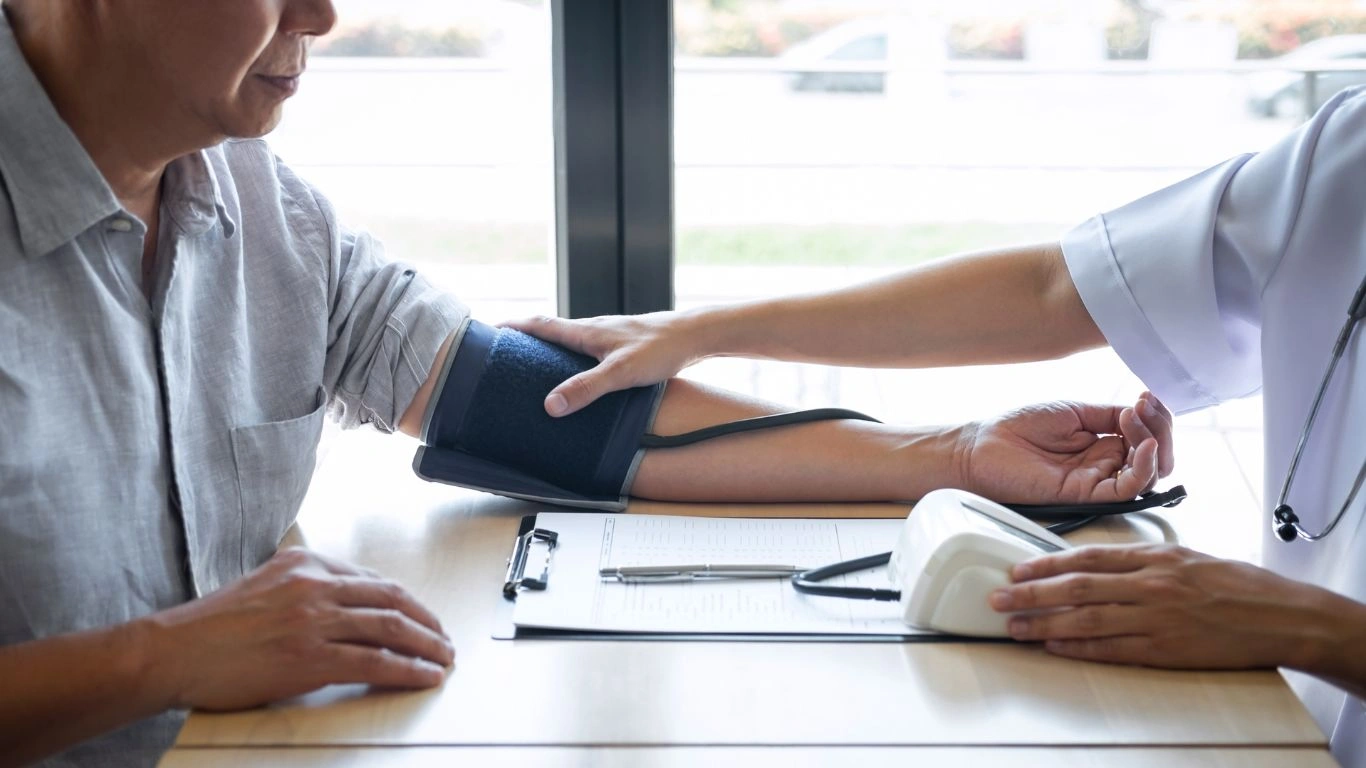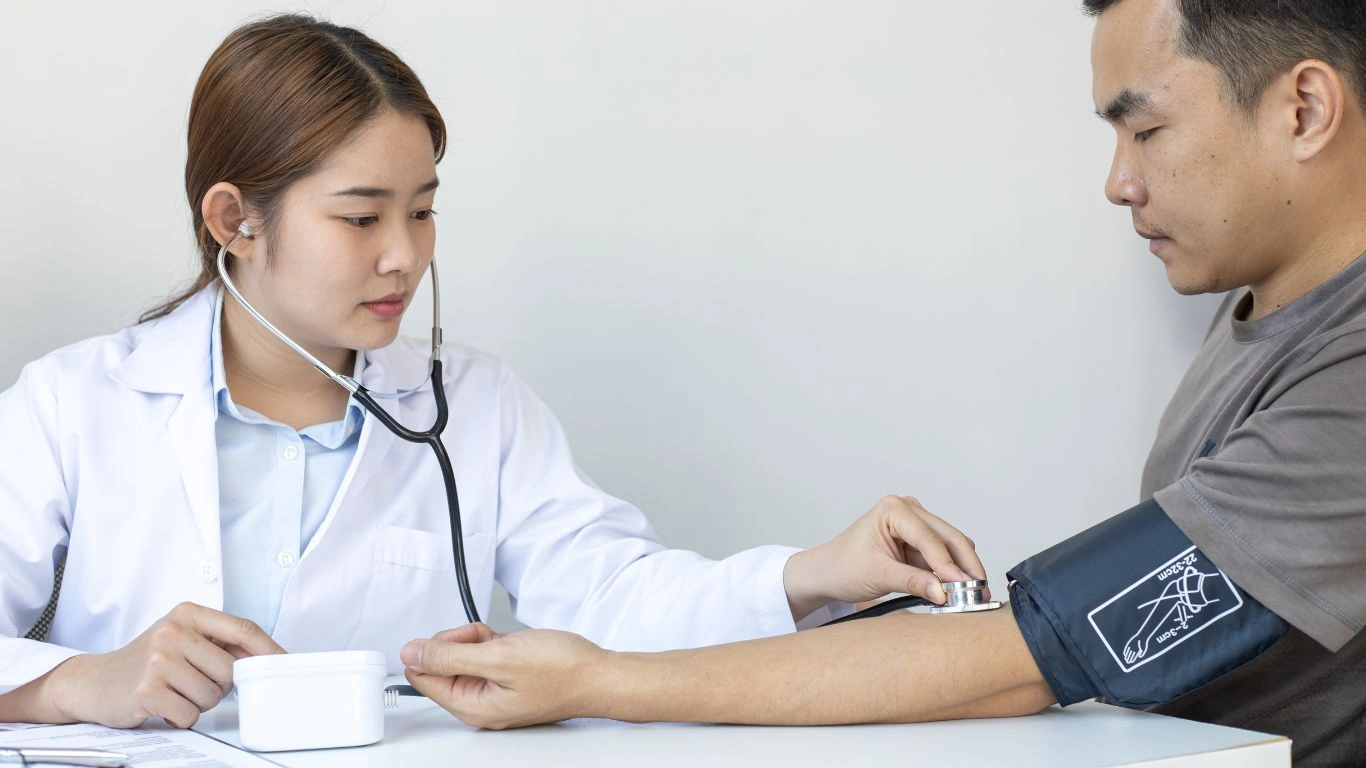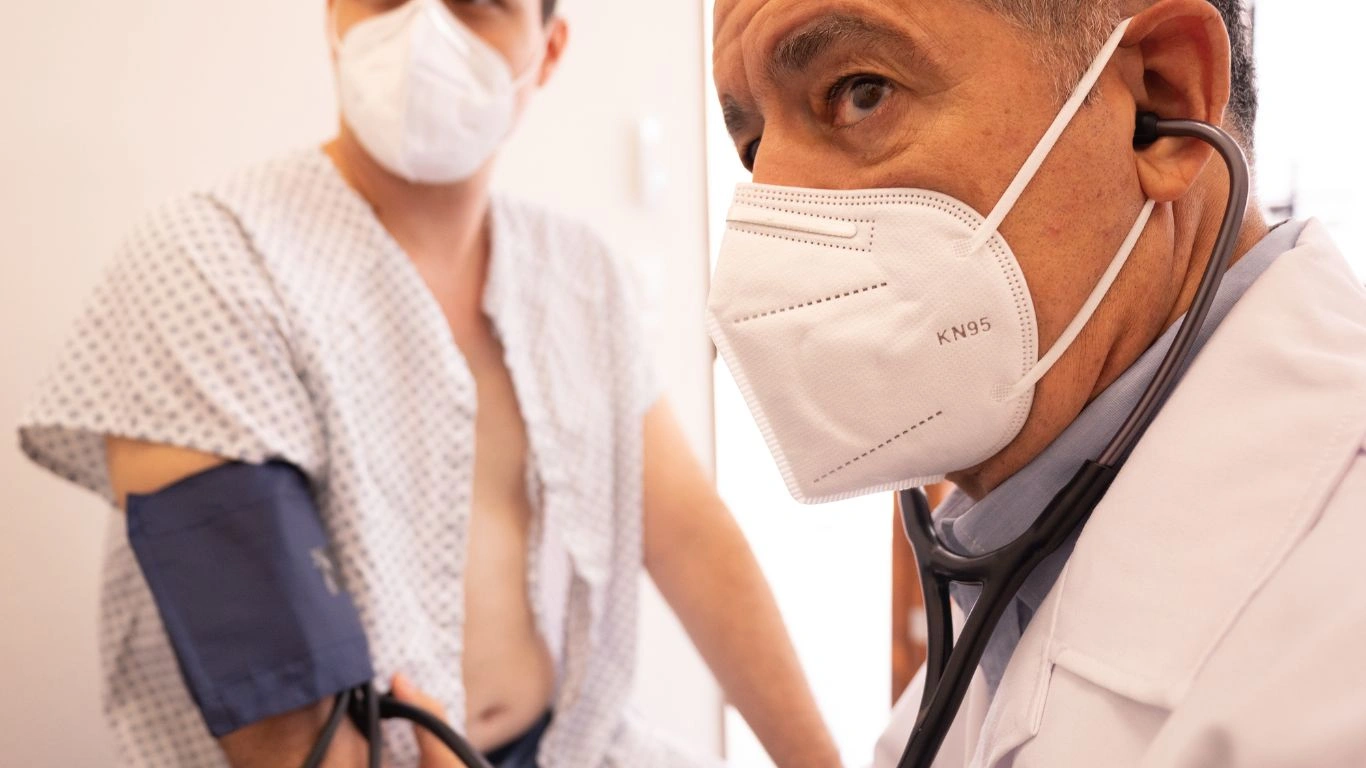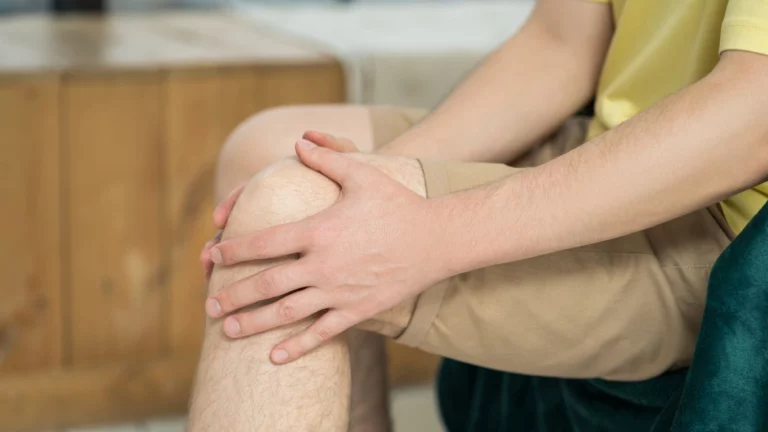Effective Blood Pressure-Friendly Hydration Strategies for Summer Heat
As an Internal Medicine physician with a focus on Hypertension Management, I’ve seen firsthand how the warmer months can impact those with high blood pressure. Summer, with its heat, humidity, and outdoor activities, poses unique challenges for maintaining proper hydration, especially for those managing hypertension. In my practice, a critical aspect of hypertension management that I frequently address is hydration. So, in this article, we’re going to talk about blood pressure-friendly hydration strategies for summer that can help you stay healthy, energized, and well-hydrated without putting too much strain on your cardiovascular system.
Why Hydration Matters for Hypertension
When it comes to managing high blood pressure, hydration plays a huge role in regulating blood volume and maintaining normal blood pressure. Adequate fluid intake helps your body maintain the proper balance of electrolytes, and it helps keep your blood vessels flexible. Without enough water, your body might struggle to maintain this balance, which can lead to dehydration. Dehydration causes the blood to thicken, making your heart work harder to pump it, potentially raising your blood pressure.
Throughout the summer, when we sweat more due to the heat, our bodies lose electrolytes and fluids more rapidly, so it’s essential to stay on top of hydration. This means not just drinking any liquids, but choosing options that are blood pressure-friendly and that support your overall cardiovascular health. So, let’s dive into some hydration strategies that can keep your blood pressure in check while keeping you cool and refreshed.
Blood Pressure-Friendly Hydration Strategies for Summer
1. Drink Plenty of Water, but Not Just Any Water
The first and most obvious hydration strategy is drinking water. But here’s the thing: Not all water is created equal when it comes to managing hypertension. While plain water is the best way to stay hydrated, I always recommend that patients look for electrolyte-balanced water or water with a slight mineral content. These types of water can help maintain your body’s electrolyte levels, which in turn can keep your blood pressure stable.

Hydration goes beyond just quenching your thirst. It’s about making sure you’re replenishing the minerals that your body needs. Think of electrolytes like sodium, potassium, and magnesium as the unsung heroes of proper hydration—they help balance fluid levels in your body and regulate muscle function, which is vital for your heart’s health. In fact, dehydration can sometimes be misdiagnosed as low blood pressure or the sensation of dizziness, so make sure to hydrate properly, especially in hot weather.
2. Consider Hydrating Foods
While drinking water is essential, it’s not the only way to stay hydrated. I often encourage patients to incorporate hydrating foods into their diet, especially during the summer. Foods like watermelon, cucumbers, oranges, strawberries, and celery are not only packed with water but also contain important vitamins and minerals that support overall health. The bonus? They’re delicious, refreshing, and make for the perfect summertime snack!
One of my go-to suggestions for my patients is to create a hydrating salad with watermelon, cucumber, and a sprinkle of mint. Not only does it help keep you hydrated, but the antioxidants in watermelon can help combat oxidative stress, which is especially important for those with hypertension. Plus, the natural sweetness from these fruits can curb cravings for sugary drinks, which are often packed with caffeine or sodium—both of which can contribute to higher blood pressure.
3. Be Mindful of Electrolytes
When it comes to hydration, it’s not just about drinking water. The balance of electrolytes in your body is just as important. If you’re engaging in activities like hiking, swimming, or running in the summer heat, you’re likely losing electrolytes through sweat. This can lead to an imbalance, especially if you’re not replenishing them properly. A diet rich in potassium, magnesium, and calcium—key electrolytes—can help support blood pressure control.
Natural sources of these electrolytes include foods like bananas, spinach, avocados, nuts, and dairy products. But if you’re sweating a lot, it might be a good idea to reach for a natural electrolyte drink that’s low in added sugars and sodium. As someone who treats patients with hypertension, I emphasize the importance of avoiding sugary sports drinks that are often laden with sodium, as they can negatively affect your blood pressure.
4. Avoid Excessive Caffeine and Alcohol
It’s no secret that both caffeine and alcohol can impact your blood pressure, especially when consumed in excess. While an occasional cup of coffee or glass of wine might not be a major concern for most people, overdoing it can lead to dehydration, increased heart rate, and an elevated blood pressure. During the summer months, it’s particularly important to keep an eye on your intake of these drinks.

Caffeine, in particular, is a stimulant that can cause a temporary spike in blood pressure, and when consumed in large amounts, it can lead to dehydration. As a general rule, try to stick to one or two cups of coffee a day and avoid energy drinks or sodas that contain both caffeine and high levels of sugar. Alcohol, on the other hand, can cause dehydration by making you urinate more frequently, and excessive drinking can also raise your blood pressure. My advice? If you enjoy a cold drink on a hot day, try opting for a refreshing iced herbal tea or sparkling water with a splash of lemon instead of the usual sugary soda or alcoholic beverages.
5. Stay Cool and Hydrated
Staying cool is just as important as staying hydrated when it comes to managing blood pressure during the summer. The heat can cause your body to lose fluids faster than usual, so it’s important to replenish them regularly. One thing I recommend to my patients is to carry a water bottle with them throughout the day, especially if they plan to be outside for long periods of time. Hydrating frequently, even when you’re not thirsty, helps to maintain your fluid levels and prevent dehydration.

Summer hydration isn’t just about drinking water; it’s about being proactive. If you’re planning on being outside in the heat, wear light clothing and try to avoid peak sun hours. Staying cool can help regulate your body temperature and, in turn, your hydration levels. And remember, if you’re sweating a lot, your body will need more water to replace those lost fluids.
Staying Hydrated with the Right Beverages
6. Infused Waters: A Flavorful and Healthy Option
If you’re anything like me, you might get bored of plain water after a while. But it’s essential to stay hydrated, so why not get creative? One of my personal favorites is infused water. You can add fruits like lemon, lime, berries, or even herbs like mint and basil. These infusions don’t just make the water taste better, but they also add an extra boost of antioxidants and vitamins that support overall health—without the added sugars and artificial flavors found in some other drinks.
Infused water is a great way to keep things interesting while sticking to your blood pressure-friendly hydration goals. Plus, it’s incredibly simple to prepare. Just chop up your favorite fruits and herbs, toss them into a pitcher of water, and let it sit for a few hours. Not only will you enjoy a refreshing drink, but you’ll also get all the natural benefits from the fruits and herbs. It’s a win-win!

7. Coconut Water: Nature’s Electrolyte Drink
Coconut water is another excellent option for hydration, and it’s something I often recommend to my patients who have high blood pressure. This natural beverage is packed with potassium, magnesium, and calcium—all of which are essential for maintaining proper blood pressure. Unlike many sports drinks that contain high amounts of sugar and sodium, coconut water is a much healthier option.
It’s also a great choice after physical activity or during a hot day when you’re sweating a lot. The natural electrolytes in coconut water help replenish what you’ve lost, keeping your hydration levels in check and ensuring that your blood pressure remains stable. It’s light, refreshing, and hydrating—what more could you ask for?
Personally, I like to keep a bottle of coconut water in my fridge during the summer months. It’s a great alternative to sugary sodas and helps me stay refreshed after a busy day of seeing patients. If you haven’t tried it yet, I highly recommend giving it a go!
8. Herbal Teas: A Warm Option with Benefits
When you think of staying hydrated, cold drinks often come to mind. But don’t overlook the power of hot beverages like herbal teas. A cup of herbal tea, whether it’s chamomile, peppermint, or ginger, can be both soothing and hydrating. In fact, herbal teas can help calm the nervous system, which is particularly beneficial for those with high blood pressure.
Herbal teas like chamomile are known for their relaxing effects. As someone who spends a lot of time working in a fast-paced environment, I’ve found that sipping on a warm cup of chamomile tea in the evening helps me wind down after a long day. This is important for hypertension management, as stress and anxiety can elevate blood pressure. In addition, many herbal teas are caffeine-free, making them a great option for those looking to reduce caffeine intake while still enjoying a warm, comforting beverage.

When choosing herbal teas, look for varieties that promote relaxation and stress relief. Some options include peppermint, lavender, and lemon balm, all of which can help keep your stress levels in check while also keeping you hydrated. Drinking herbal tea throughout the day can be a lovely addition to your hydration routine.
Timing Your Hydration: When to Drink
9. Drink Consistently Throughout the Day
One mistake many people make when it comes to hydration is waiting until they feel thirsty to drink. By the time you’re thirsty, your body is already showing signs of dehydration. This is particularly concerning for individuals managing hypertension, as dehydration can increase the strain on your heart and elevate blood pressure.
Instead, I recommend sipping water or other hydrating beverages consistently throughout the day, even if you’re not feeling thirsty. A good rule of thumb is to drink a small glass of water every hour, ensuring your body has a steady stream of fluids throughout the day. If you’re spending time outside in the heat, increase your fluid intake to make up for what you’re losing through sweat. Keeping a water bottle with you at all times can help make this habit easier to maintain.
Additionally, you might want to consider drinking a glass of water first thing in the morning. After hours of sleep, your body is naturally dehydrated, and starting the day with water helps replenish your fluids and get your metabolism going. I also suggest drinking water before meals to help with digestion and maintain a sense of fullness—this can prevent overeating, which can also benefit blood pressure control.
10. Hydrate Before, During, and After Physical Activity
If you enjoy outdoor activities like walking, biking, or swimming during the summer, it’s essential to stay hydrated before, during, and after exercise. When you’re physically active, your body loses fluids more rapidly, and that’s when hydration becomes even more important for blood pressure management.
Personally, I always tell my patients to aim for a glass of water about 30 minutes before starting any physical activity. During your workout, try to take small sips of water every 15 to 20 minutes to keep your hydration levels up. After you’re done, drink another glass to replenish what you’ve lost through sweat. This will not only help with hydration but will also prevent any potential dips in blood pressure or dizziness.

Remember, you don’t need to overdo it with sports drinks unless you’re engaging in high-intensity or prolonged activities. For most people, plain water or coconut water should do the trick. But if you are exercising in extreme heat for extended periods, you may want to consider a low-sugar electrolyte solution to replace the minerals you’ve lost.
How to Avoid Common Hydration Mistakes
11. Don’t Rely on Sugary Beverages
As tempting as it may be to reach for a sugary soda or sports drink when you’re thirsty, these beverages can have a negative impact on both your hydration and your blood pressure. Sugary drinks, especially those that are high in caffeine and sodium, can cause your body to retain water in an unhealthy way, potentially raising your blood pressure.
From my experience, I’ve noticed that many people aren’t aware of just how much sugar is in their favorite drinks. For instance, a typical soda or fruit juice can have up to 30 grams of sugar per serving, which is far more than you should be consuming in a day. Not only can excessive sugar spike your blood pressure, but it can also lead to weight gain, which further contributes to hypertension.
If you’re craving something sweet, try making your own homemade iced teas or flavored waters. As mentioned earlier, infusing water with fruits and herbs is an excellent way to add flavor without the added sugar. And if you’re still in need of a caffeine boost, consider drinking iced green tea—it’s a healthier, blood pressure-friendly option that also provides antioxidants.

12. Beware of Overhydration
While dehydration is a concern, it’s equally important to avoid overhydration, especially during the hot summer months. This condition, called hyponatremia, occurs when the balance of electrolytes in your body becomes diluted due to excessive water intake. While it’s rare, overhydration can cause serious complications, including low sodium levels, which may lead to symptoms like nausea, headaches, confusion, and in severe cases, even seizures.
In my practice, I emphasize moderation. I tell my patients that hydration isn’t about constantly chugging water. Instead, it’s about listening to your body and drinking when you’re thirsty. Of course, you want to make sure you’re sipping regularly, but you don’t need to go overboard. Paying attention to your body’s signals, like feeling thirsty or dry, is a good indicator that you need to hydrate. But don’t force it—hydration is all about balance.
If you’re unsure about how much water is right for you, a general guideline is to aim for 8 cups of water a day, but this can vary depending on your activity level, climate, and health conditions. The best advice I can give is to focus on your body’s thirst cues and not stress too much about hitting an exact number of cups.
Other Tips for Managing Your Blood Pressure in Summer
13. Stay Active, But Don’t Overdo It
Exercise is one of the best ways to manage blood pressure. As a physician who deals with hypertension management daily, I can’t stress enough how important physical activity is for overall heart health. However, with the summer heat, it’s important to approach outdoor exercise with caution. Overexertion in hot temperatures can lead to dehydration, which could cause a spike in your blood pressure.
If you’re planning on exercising outdoors, try to do so during cooler times of the day, like early mornings or late evenings. Wear light, breathable clothing and make sure you’re hydrating before, during, and after your workout. If possible, choose activities that are less intense, such as walking or swimming, which are easier on your joints and cardiovascular system while still providing great benefits.
And remember—always listen to your body. If you start feeling dizzy, lightheaded, or fatigued, take a break and hydrate. It’s better to stay safe than to push through and risk a blood pressure spike or dehydration.

14. Manage Stress Effectively
We all know that stress can be a major factor in elevating blood pressure. And during the summer, life can sometimes get a little chaotic—vacations, family gatherings, or just dealing with the heat. That’s why managing stress is crucial, not only for your mental well-being but also for your blood pressure.
In my personal experience, I’ve found that taking time to unwind, even for just a few minutes a day, can make a big difference in managing blood pressure. Try incorporating stress-relieving practices into your daily routine, like deep breathing exercises, meditation, or yoga. These activities can help relax your nervous system, which in turn can lower your blood pressure and make it easier to maintain healthy hydration levels.
When you’re stressed, your body releases hormones like cortisol, which can cause your blood pressure to rise. By using relaxation techniques, you can help reduce that cortisol release and keep your blood pressure in check. In addition, stress management has the added bonus of improving your sleep quality, which is another factor that influences blood pressure.
References & Disclaimer
For more information on hypertension and hydration, you can visit reputable resources such as Google or consult with a healthcare professional for personalized advice.
Disclaimer: This article is intended for informational purposes only and is not a substitute for professional medical advice, diagnosis, or treatment. Always seek the advice of your physician or other qualified health provider with any questions you may have regarding a medical condition. Never disregard professional medical advice or delay seeking it because of something you have read in this article.

Dr. Gwenna Aazee is a board-certified Internal Medicine Physician with a special focus on hypertension management, chronic disease prevention, and patient education. With years of experience in both clinical practice and medical writing, she’s passionate about turning evidence-based medicine into accessible, actionable advice. Through her work at Healthusias.com, Dr. Aazee empowers readers to take charge of their health with confidence and clarity. Off the clock, she enjoys deep dives into nutrition research, long walks with her rescue pup, and simplifying medical jargon one article at a time.






